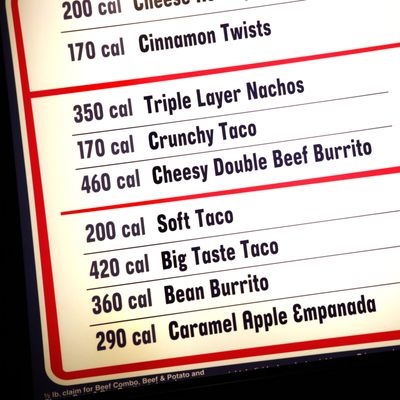
As of this week, you can no longer feign ignorance when your Cheesecake Factory dining companion (or doctor) tells you, “Your pasta has over 2,000 calories — you know that, right?” That’s because a rule that the FDA has tried to enact for ages obligating chains to post calorie counts on their menus goes into effect today, concluding no less than eight years of fights between the industry and public-health advocates in Washington. The regulation requires all restaurants, supermarkets, and even movie theaters or vending-machine operators with 20 or more locations to list how many calories are in every standard menu item. That means the counts must appear on the overhead display boards behind the counter, as well as on printed menus at tables (or, increasingly, the devices you swipe through at cashierless kiosks).
The rule was actually passed as part of the Affordable Care Act in 2010, and was initially supposed to roll out by 2015. But the regulation faced a lot of backlash, not so much from big companies like McDonald’s, Starbucks, or Chili’s (which were forced to adapt to New York’s calorie-count law in 2008 anyway), but rather from smaller regional chains and groups like the National Association of Convenience Stores, whose members argue that it’s tedious and expensive to calculate calories in their vast array of constantly changing deli-counter items.
In the end, the Feds issued three separate delays, giving food-service providers almost a decade to ease into this. FDA Commissioner Scott Gottlieb now warns in a statement that the reckoning has arrived: Consumers can finally walk into any restaurant chain, he says, “and know, at a glance, how many calories are in the foods.”
Public-health advocates say conspicuous labels are basically the last line of defense to keep American consumers from casually inhaling giant burritos, triple-meat burgers, “Pizzadillas,” and anything else that contains a full day’s worth of calories. Up till now, the White House has done little to suggest that it agrees, but last week Gottlieb did lay out, in language uncharacteristic for the Trump administration, two reasons his agency favors them: “We know that providing calorie information on menu labels actually inspires consumers to make smarter choices about overall consumption, when they want to,” he told the Washington Post. “It does reduce overall caloric intake.” The second reason, he says, is that the label requirements “will inspire competition among restaurants to produce options that are more healthful.”




